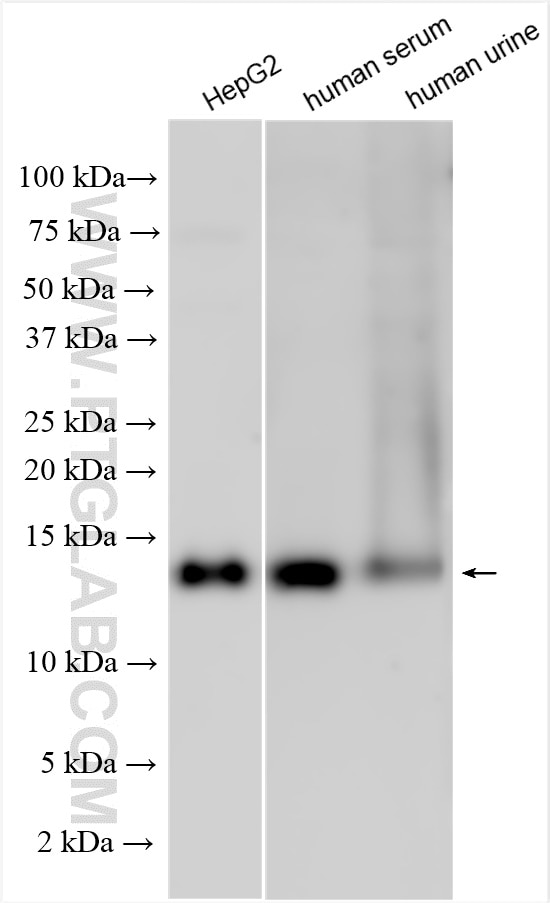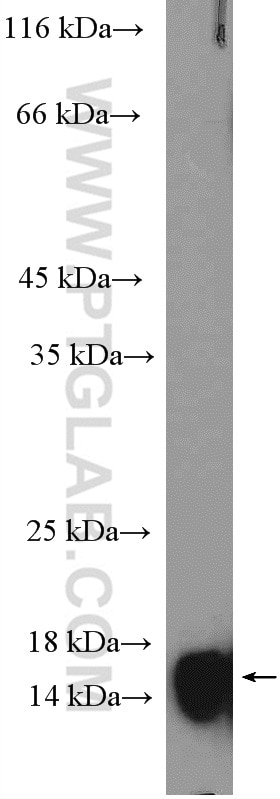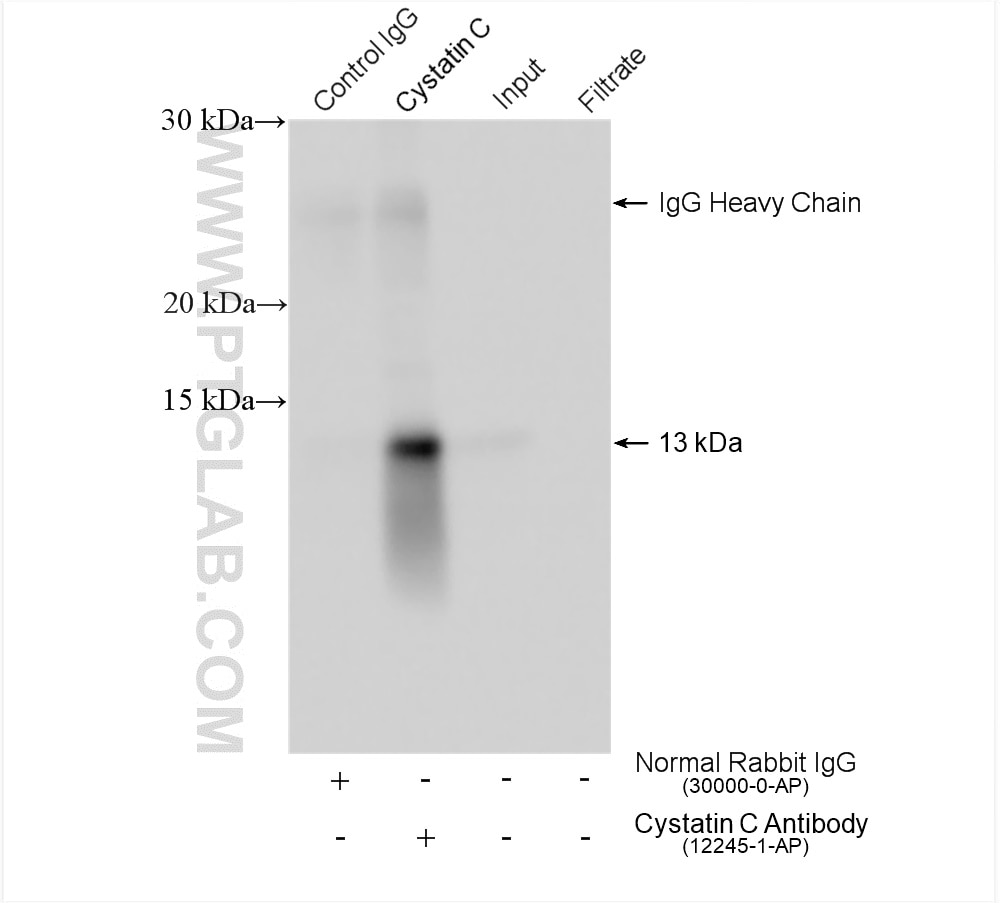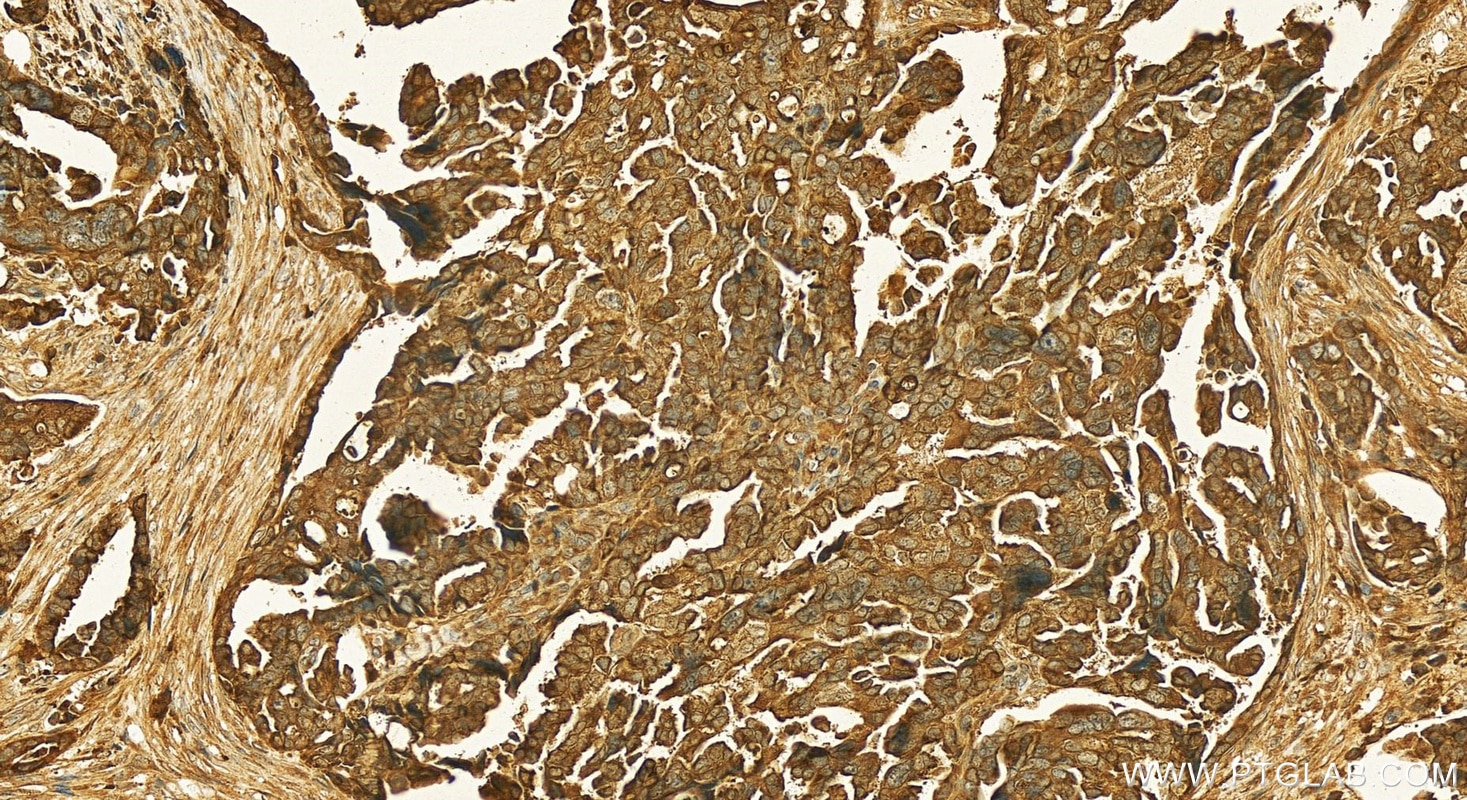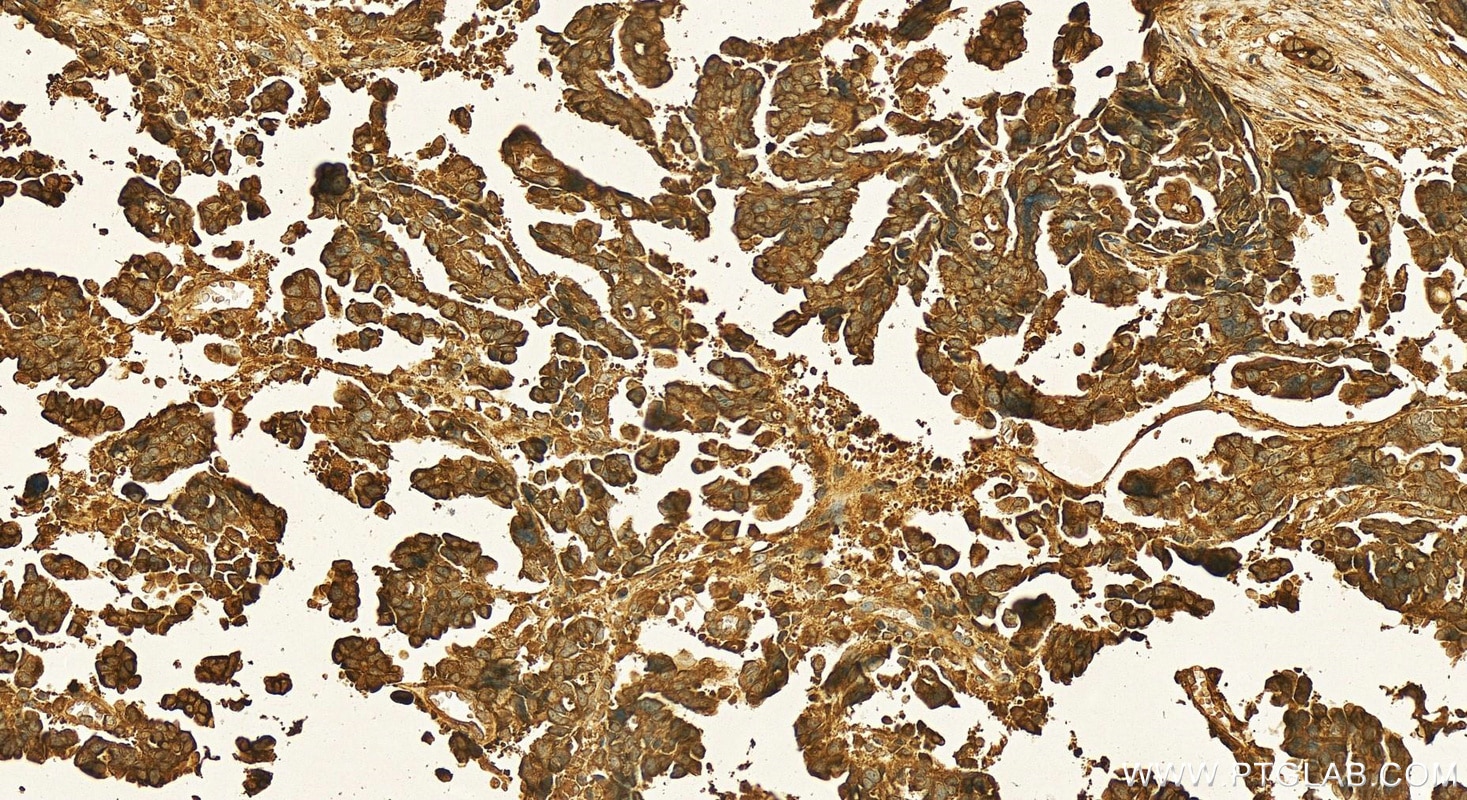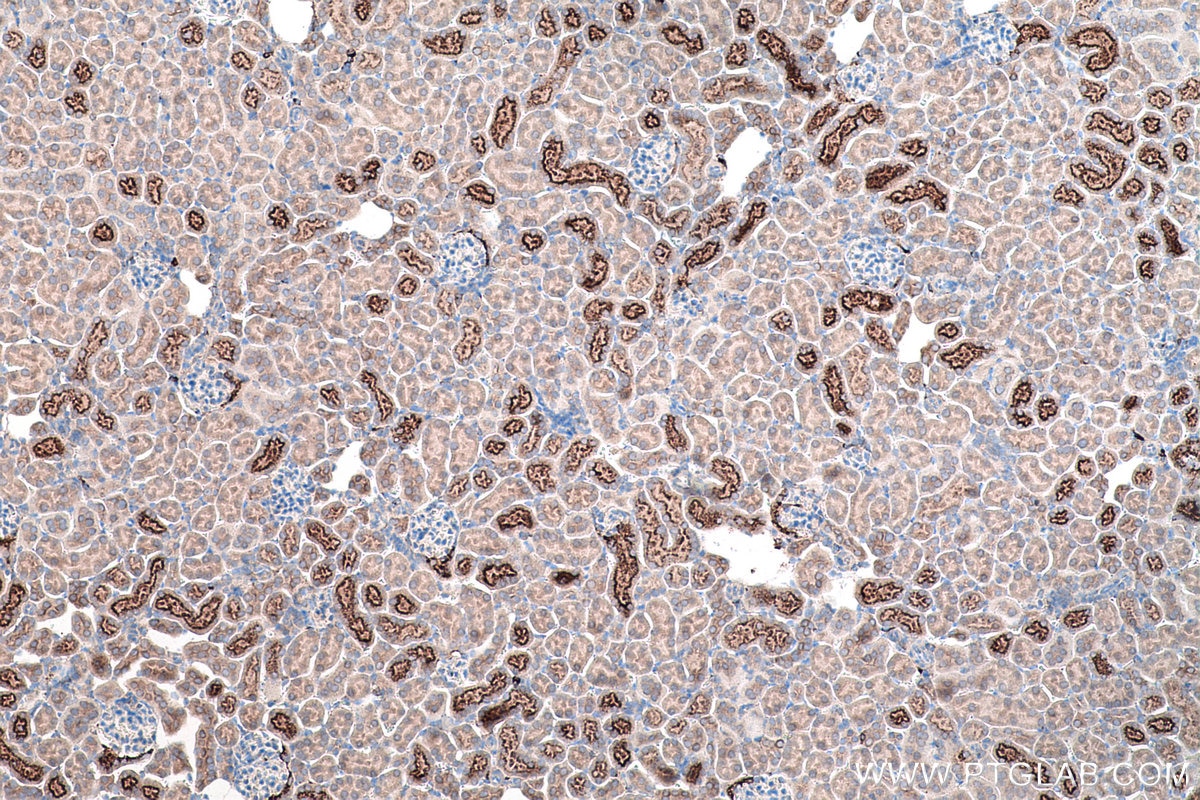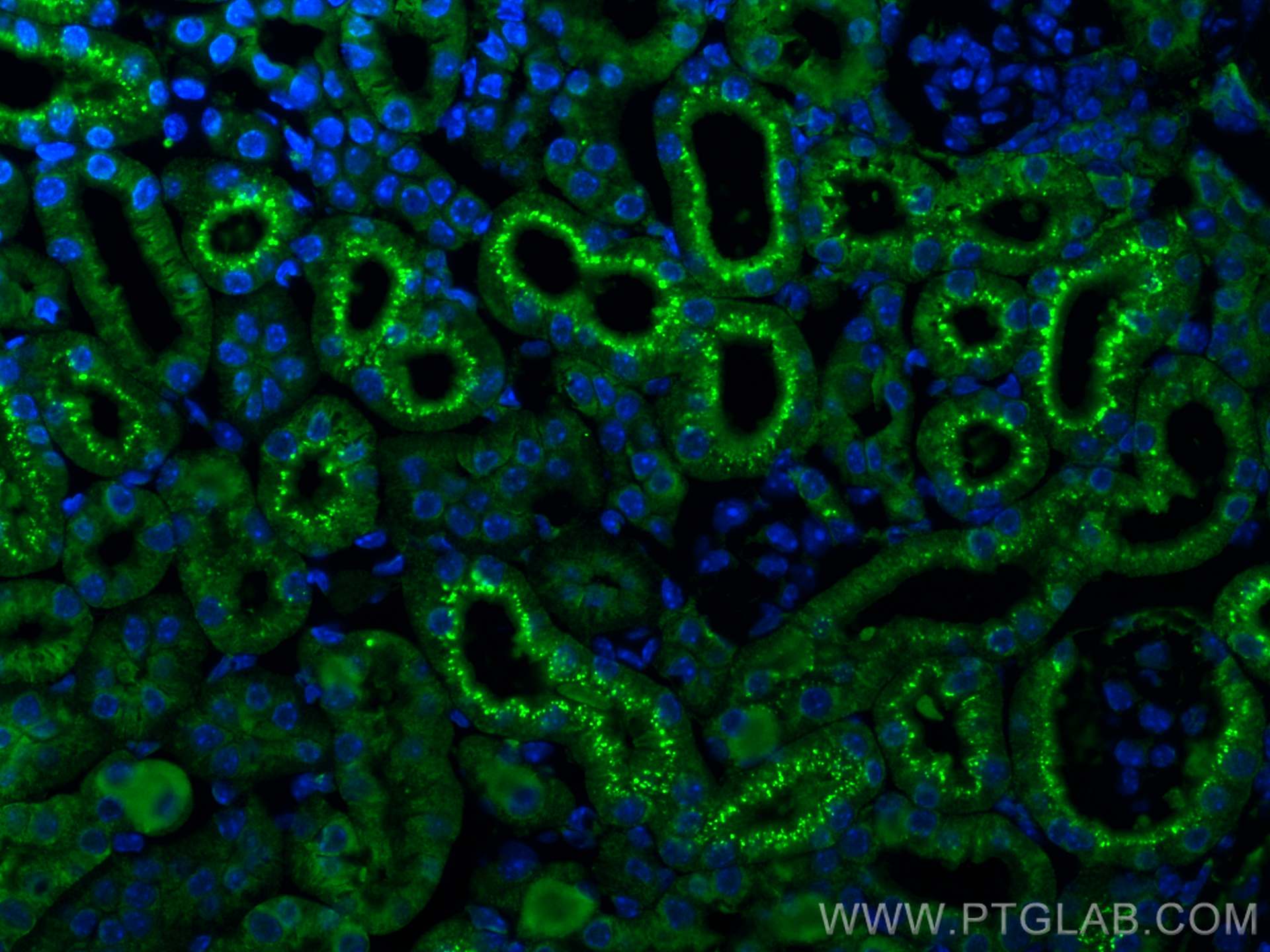Tested Applications
| Positive WB detected in | Caco-2 cells, human brain tissue, fetal human brain tissue, human milk, HepG2 cells, mouse brain tissue, HeLa cells, U-87 MG cells, U2OS cells, human urine, human serum |
| Positive IP detected in | Caco-2 cells |
| Positive IHC detected in | human kidney tissue, human ovary tissue, mouse kidney tissue, human ovary cancer tissue Note: suggested antigen retrieval with TE buffer pH 9.0; (*) Alternatively, antigen retrieval may be performed with citrate buffer pH 6.0 |
| Positive IF-P detected in | mouse kidney tissue |
| Positive IF/ICC detected in | HeLa cells |
Recommended dilution
| Application | Dilution |
|---|---|
| Western Blot (WB) | WB : 1:2000-1:16000 |
| Immunoprecipitation (IP) | IP : 0.5-4.0 ug for 1.0-3.0 mg of total protein lysate |
| Immunohistochemistry (IHC) | IHC : 1:50-1:500 |
| Immunofluorescence (IF)-P | IF-P : 1:50-1:500 |
| Immunofluorescence (IF)/ICC | IF/ICC : 1:50-1:500 |
| It is recommended that this reagent should be titrated in each testing system to obtain optimal results. | |
| Sample-dependent, Check data in validation data gallery. | |
Published Applications
| WB | See 32 publications below |
| IHC | See 3 publications below |
| IF | See 3 publications below |
Product Information
12245-1-AP targets Cystatin C in WB, IHC, IF/ICC, IF-P, IP, ELISA applications and shows reactivity with human, mouse samples.
| Tested Reactivity | human, mouse |
| Cited Reactivity | human, mouse, rat, pig, duck |
| Host / Isotype | Rabbit / IgG |
| Class | Polyclonal |
| Type | Antibody |
| Immunogen | Cystatin C fusion protein Ag2890 Predict reactive species |
| Full Name | cystatin C |
| Calculated Molecular Weight | 146 aa, 16 kDa |
| Observed Molecular Weight | 13 kDa |
| GenBank Accession Number | BC013083 |
| Gene Symbol | Cystatin C |
| Gene ID (NCBI) | 1471 |
| RRID | AB_2088058 |
| Conjugate | Unconjugated |
| Form | Liquid |
| Purification Method | Antigen affinity purification |
| UNIPROT ID | P01034 |
| Storage Buffer | PBS with 0.02% sodium azide and 50% glycerol, pH 7.3. |
| Storage Conditions | Store at -20°C. Stable for one year after shipment. Aliquoting is unnecessary for -20oC storage. 20ul sizes contain 0.1% BSA. |
Background Information
Cystatin C is a 13-kDa inhibitor of cysteine proteinases which is secreted by all cell types and is completely cleared from the organism through glomerular filtration, shown to be an early and sensitive biomarker of renal dysfunction. It is also used as an emerging biomarker in cardiovascular disease. Cystatin C is involved in a variety of inflammatory reactions. The concentration of serum cystatin C has also been shown to be unaltered in certain inflammatory conditions or other disorders of metabolism. The plasma level of serum cystatin C can be expressed as its level of generation from cells and diet and its subsequent elimination through the gut, liver, and kidneys.
Protocols
| Product Specific Protocols | |
|---|---|
| WB protocol for Cystatin C antibody 12245-1-AP | Download protocol |
| IHC protocol for Cystatin C antibody 12245-1-AP | Download protocol |
| IF protocol for Cystatin C antibody 12245-1-AP | Download protocol |
| IP protocol for Cystatin C antibody 12245-1-AP | Download protocol |
| Standard Protocols | |
|---|---|
| Click here to view our Standard Protocols |
Publications
| Species | Application | Title |
|---|---|---|
Biosens Bioelectron Microneedle patches integrated with lateral flow cassettes for blood-free chronic kidney disease point-of-care testing during a pandemic. | ||
Environ Pollut Insight into the negative impact of ionic liquid: A cytotoxicity mechanism of 1-methyl-3-octylimidazolium bromide. | ||
J Hazard Mater Graphene oxide disrupted mitochondrial homeostasis through inducing intracellular redox deviation and autophagy-lysosomal network dysfunction in SH-SY5Y cells. | ||
Cell Biol Toxicol Inhibition of ER stress attenuates kidney injury and apoptosis induced by 3-MCPD via regulating mitochondrial fission/fusion and Ca2+ homeostasis. | ||
Mol Nutr Food Res Diosgenin Protects Against Kidney Injury and Mitochondrial Apoptosis Induced by 3-MCPD Through the Regulation of ER Stress, Ca2+ Homeostasis, and Bcl2 Expression. | ||
J Cell Mol Med LINC00963 targeting miR-128-3p promotes acute kidney injury process by activating JAK2/STAT1 pathway. |



